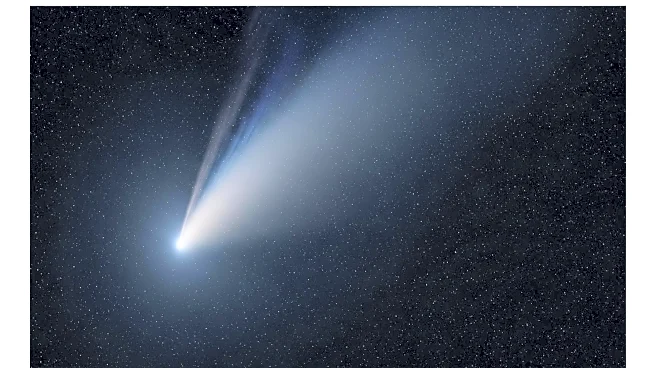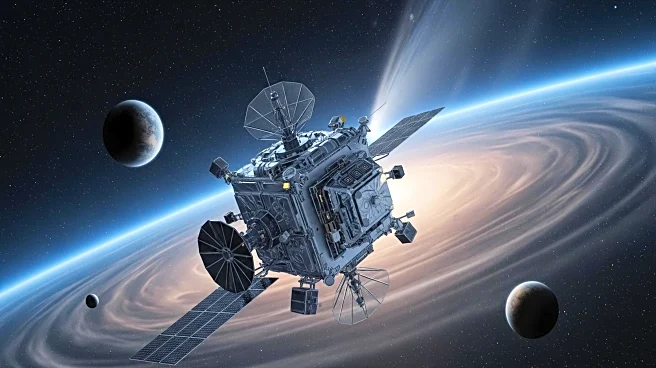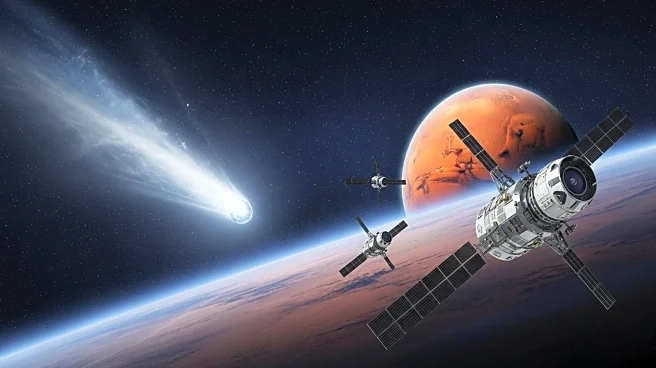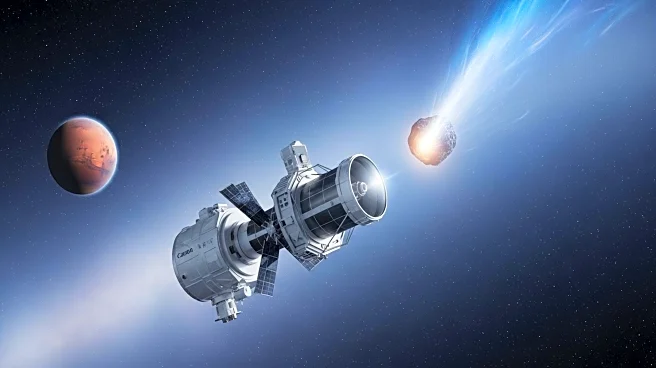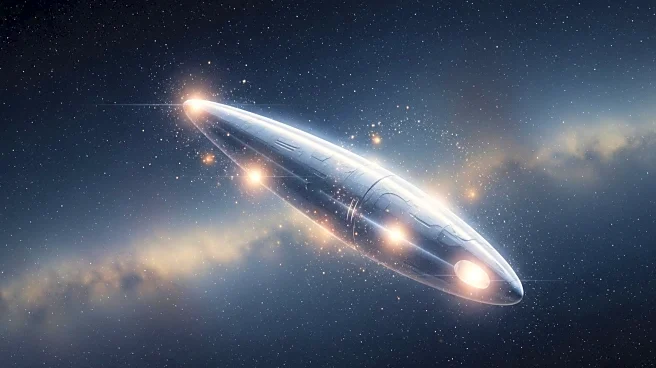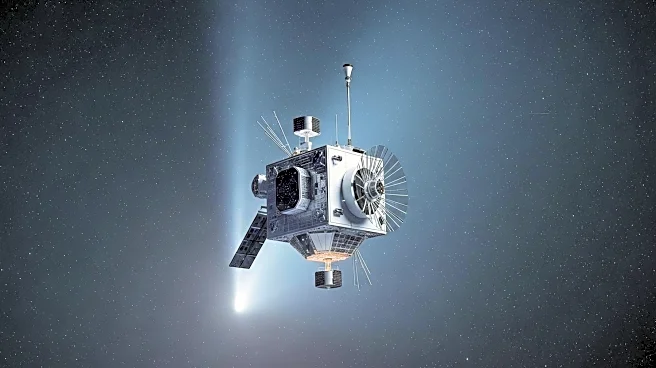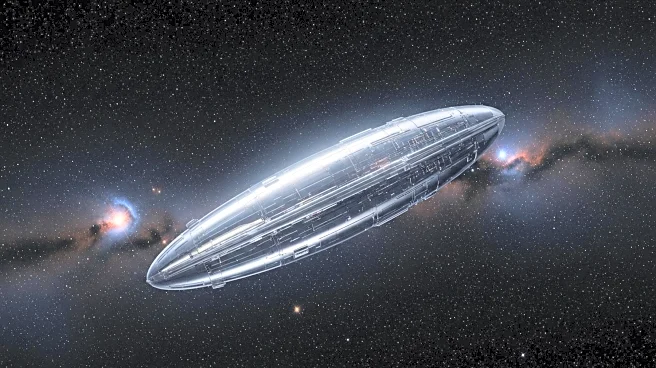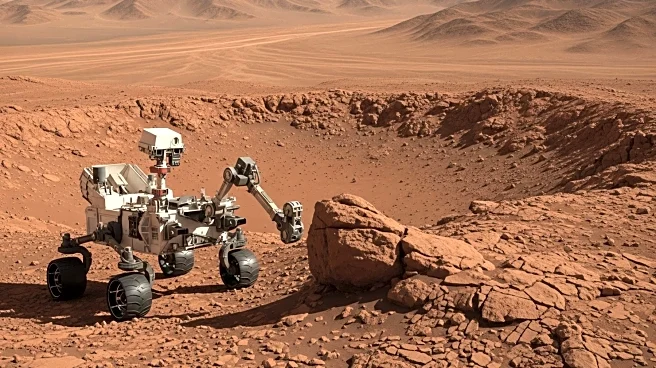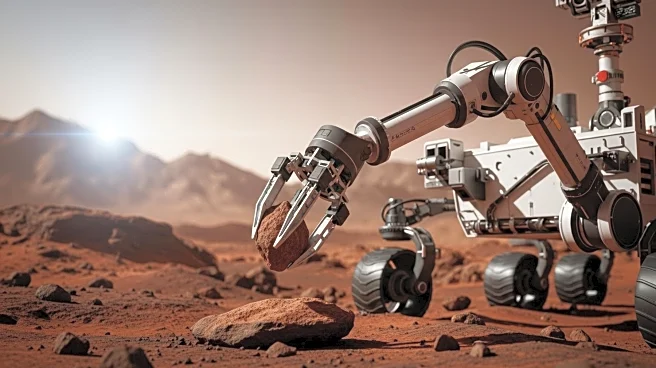What's Happening?
Rumors have circulated on social media suggesting that the interstellar comet 3I/ATLAS is hurtling towards Earth, potentially posing a threat or being an alien spacecraft. These claims have been fueled by a New York Post article and various social media posts, including doctored images and false statements attributed to scientists. However, NASA and the European Space Agency (ESA) have clarified that the comet, discovered by NASA's ATLAS telescope, is not a threat to Earth. The comet, moving at a record speed of 130,500 mph, is an interstellar visitor, the third of its kind ever observed. It was closest to Earth on July 21, 2025, at a distance of 270 million kilometers, far beyond any danger zone. Scientists view this as a rare opportunity to study materials from outside our solar system.
Why It's Important?
The confirmation from NASA and ESA that 3I/ATLAS poses no threat is significant in dispelling public panic and misinformation. The comet's interstellar nature offers scientists a unique chance to study its composition, potentially revealing insights into the building blocks of star systems across the galaxy. Understanding whether the comet's makeup is similar to those formed within our solar system could have implications for theories about planetary formation and chemical connections between different star systems. This scientific opportunity underscores the importance of accurate information dissemination and the role of space agencies in educating the public.
What's Next?
NASA and ESA plan to continue observing 3I/ATLAS using spacecraft already in the solar system, as ground-based telescopes will lose visibility due to the comet's trajectory. ESA's Mars orbiters and NASA's Psyche mission will collect data as the comet approaches Mars. ESA's JUICE mission will observe the comet post-perihelion, when the Sun's heat will cause the comet's ice to vaporize, forming a bright halo and tail. These observations will help determine the comet's chemical composition, providing valuable data for comparison with solar system comets.
Beyond the Headlines
The study of 3I/ATLAS could contribute to broader scientific understanding of interstellar objects and their role in the galaxy. By analyzing the comet's composition, scientists may uncover evidence of shared chemical processes across star systems, or alternatively, discover unique chemistry from another solar system. This research could inform future studies on planetary system formation and the potential for life beyond Earth.

